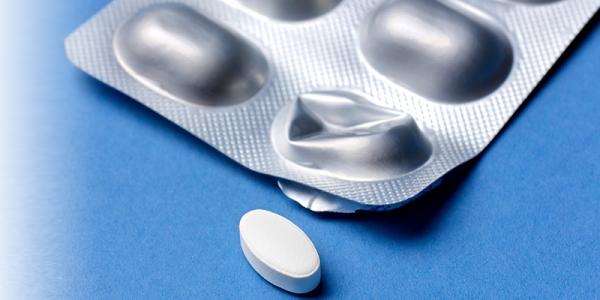
請點擊此轉換成中文
British scientist Alexander Fleming’s discovery of penicillin is one of the twentieth century’s most significant scientific breakthroughs. Before antibiotics, strep throat could be fatal, scarlet fever had a high mortality rate, and ear infections sometimes spread to the brain to do irreparable damage. Today, we take what were once considered miracle drugs for granted and use them regularly.
How Antibiotics Work
Antibiotics target specific features of bacterial cells that are different from human cells. This selectivity helps them fight infections without harming you. Bactericidal antibiotics kill bacteria directly. Bacteriostatic antibiotics inhibit bacterial growth and prevent bacteria from multiplying, stopping the infection from progressing and clearing the way for the immune system to fight back.
Different categories of antibiotics use different mechanisms to fight disease:
- Beta-lactam antibiotics, such as penicillin G, amoxicillin, or ampicillin, block cell wall synthesis. Most bacteria are surrounded by a cell wall, which maintains their shape and provides structural support. Beta-lactam antibiotics block the production of a key component in cell wall synthesis. Without support of the cell wall, pressure builds up inside the bacteria until it bursts and dies.
- Polymyxin antibiotics, such as colistin and polymyxin B, disrupt cell membrane function, causing the cell to leak out its contents and die. This class of antibiotic is usually reserved for use as a last resort to treat infections by certain drug-resistant bacteria. That’s because polymyxin antibiotics have a high toxicity for humans and can lead to kidney and nerve damage.
- Tetracyclines, macrolides, and aminoglycosides are three separate categories of antibiotics that block protein synthesis. While these drugs work in different ways, they all target the bacteria’s ribosomes, structures inside the bacteria that are responsible for making proteins. Bacteria that cannot build proteins cannot survive.
- Quinolones antibiotics such as ciprofloxacin and levofloxacin, disrupt DNA replication. When bacteria try to copy their DNA, these drugs cause the DNA strands to break, making it impossible for the bacteria to live and reproduce.
- Rifamycin antibiotics kill bacteria by blocking RNA polymerase, an enzyme that helps turn DNA into messenger RNA (mRNA), the first step of protein production. As a result, bacteria can't make the proteins they need to grow and survive.
- Sulfonamides, among the first and most widely used antibiotics, interfere with the synthesis of folic acid, which bacteria need to multiply. While sulfa drugs have been replaced by newer drugs in many cases, they remain important in treating certain conditions and are more affordable for use in developing countries.
Delivery Systems
Chances are, you’ve mostly taken antibiotics orally, in pill or liquid form. For external infections, such as those affecting the skin, ears, or eyes, topical antibiotics, which are applied to the affected area, may be prescribed. Some antibiotics used for sinus infections are delivered via nasal sprays. Others may be given as an injection or intravenously, through an IV. These are typically used for more serious infections, when it’s essential to get medication in your system ASAP.
Benefits of Antibiotics
According to the health and science platform Science Direct, antibiotics have extended the average human lifespan by 23 years over the course of the last century. The benefits of these drugs are clear. They can:
- Clear bacterial infections from your body
- Relieve your symptoms so you start to feel better
- Accelerate your recovery
- Halt the spread of infection to others
- Be used prophylactically to prevent infection, such as before invasive dental work or certain surgical procedures
- Prevent an infection from becoming a serious illness and sometimes, literally save your life.
Risks and Side Effects
Like most drugs, antibiotics can have side effects. The most common ones include nausea and vomiting, dizziness, rashes, yeast infections, and diarrhea. Antibiotics, particularly the less targeted broad-spectrum drugs such as amoxicillin, erythromycin, or doxycycline, can kill beneficial bacteria, like the intestinal gut flora that help with digestion, or the bacteria that keep Candida from multiplying excessively and causing yeast infections. While you are taking antibiotics, consuming fermented foods that contain probiotics, such as sauerkraut, yogurt, kimchi, or tempeh, can help replenish some of those beneficial bacteria.
Serious side effects from taking antibiotics are less common. Allergic reactions can range from a skin rash to blistering of the skin, swelling of your face, lips, tongue or throat, breathing problems, dizziness, rapid heartbeat, and anaphylaxis.
Antibiotic Do’s and Don’ts
Do tell your healthcare provider about any and all medications you are taking. Some may interact with the antibiotic you are on. Certain antibiotics interact with blood thinners, antacids, NSAIDs, beta blockers, anti-depressants, and other medications. Calcium or iron supplements can interfere with the absorption of certain antibiotics.
Don’t drink alcohol while you are on your antibiotic without checking with your doctor first. Some antibiotics will cause nausea and vomiting when combined with alcohol.
Do talk to your pharmacist about your prescription and potential side effects. Make sure to read the information you receive with your medication.
Do take your medication as prescribed. Stopping the medication as soon as your symptoms disappear is a mistake. The infection could come roaring back, and the bacteria could develop a resistance to the antibiotic.
Don’t save or share your antibiotics, or take medication prescribed for someone else. The drugs may be past their expiration date, or you may not have enough to cure an infection. Moreover, many antibiotics are developed to fight specific infections. Just because one antibiotic worked against strep throat doesn’t mean it can treat a UTI.
Don’t take antibiotics unless prescribed by a doctor. Taking antibiotics too often or unnecessarily contributes to the growth of antibiotic-resistant organisms.
Don’t take antibiotics for a viral infection. Antibiotics are ineffective against viruses.
Do tell your doctor if you think you might be pregnant. Certain antibiotics, such as tetracycline, can cause birth defects.
Do call your doctor if you experience any of the side effects described in this article. If you think you may be going into anaphylactic shock, call 911.
This article first appeared in the August 2025 edition of the HealthPerks newsletter.

